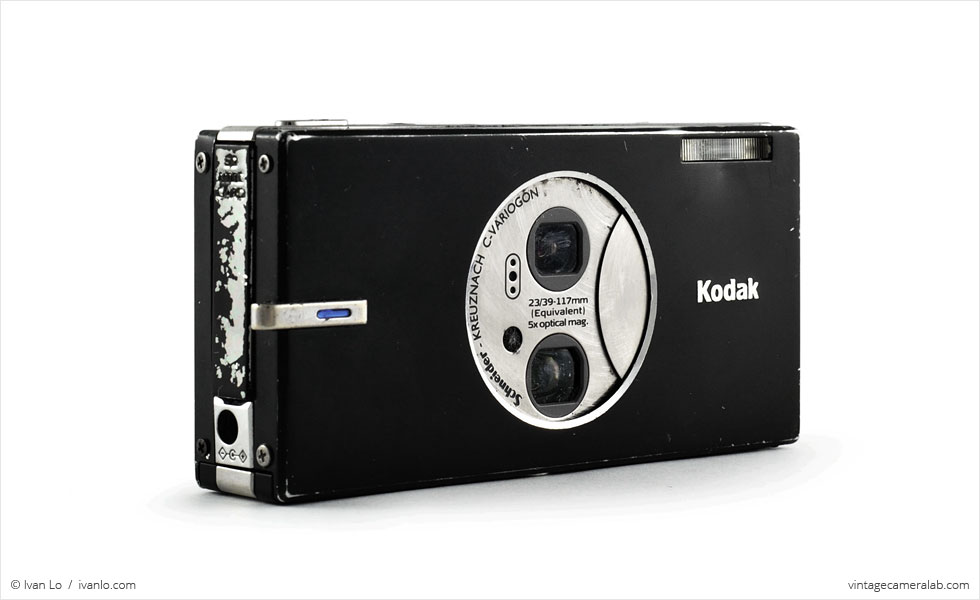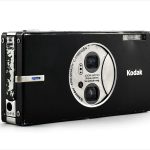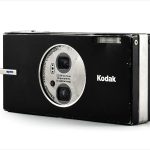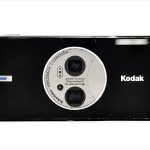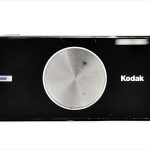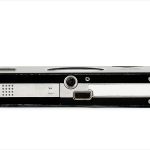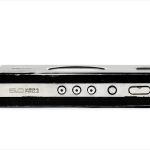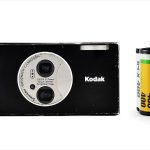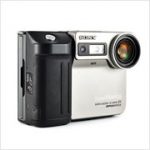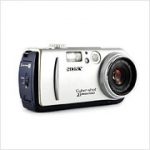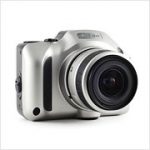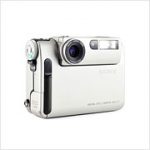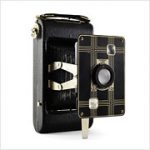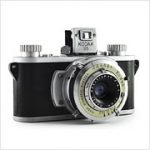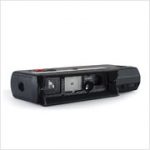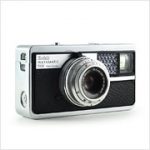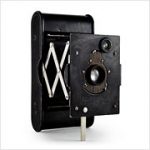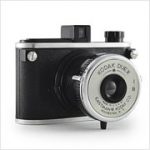Kodak EasyShare V570 Specifications
| Manufacturer: | Eastman Kodak Company |
| Origin: | USA |
| Made in: | China |
| Introduced: | 2006 |
| Type: | Live Preview |
| Format: | Digital (Secure Digital) |
| Dimensions: | 10 x 5 x 2.1 cm |
Kodak EasyShare V570 Overview
The Kodak EasyShare V570 is a high-end compact digital camera introduced by Kodak in 2006 and the first ever dual lens digital camera to see production. With its classic lines and minimalist design, the V570 received a gold medal at the 2006 Industrial Design Excellence Award and went on to spawn two more dual lens digital cameras: the Kodak V610 and the V705.
As is the case with many dual lens cameras, the V570’s party piece is being able to switch between the two lenses on demand. Both periscopic lenses are designed by the legendary German optical company Schneider Kreuznach. The top lens is a fixed wide angle with a 35mm equivalent focal length of 23mm f/2.8 while the bottom lens is a zoom with the range of 39-117mm f/3.9-4.4. Switching between the fixed wide angle and the zoom lens can be accomplished in both still and video mode by simply using the “T” and “W” zoom rocker switch on the upper-right corner of the back plate.
If you’re wondering why none of the buttons on this camera are labeled, it’s not because Kodak went overboard on the minimalism but rather because the paint on my example has worn off over time. Going from the left to right on the top plate, the first button is for a custom mode, the next one activates video mode, and the last of the three lit buttons switches between several preset still modes. Next is the textured power on/off button which retracts the circular metal cover to reveal the lenses, microphone, and indicator light. Last is the long oval shutter button that triggers the five megapixel sensor.
From top to bottom, the column of buttons under the speaker on the left side of the back plate activate the flash, delete images/video, bring up the menu, review previously taken images/video and “share” content. On the other side of the LCD screen are the aforementioned zoom rocker in the top right with a multidirectional “OK” button that can also be used to as an on/off switch for the LCD, scroll through images/video/menus and activate the macro mode. Standard SD cards can be loaded through the side of the camera by lifting up the tab (which is now speckled from paint loss) and an external power source can be connected to the socket below. The bottom plate of the camera houses the battery compartment, tripod socket, and a proprietary dock connector.
After the Sony P50, the V570 is my second ever compact digital camera. I bought it used at the end of 2007 for its video capabilities and also because I’m an absolute sucker for dual lens cameras and I just couldn’t resist such a thing of beauty. The V570 served me faithfully until I retired it in early 2011 after the proverbial cracks began showing. It’s traveled to nearly a dozen different countries with me during its working life and has been strapped to the front of rickety motorcycles in war-torn Kabul, stood witness to the slums of northeast India, dangled from the top of the Burj Khalifa, and many more adventures too numerous to name. Kodak never designed the V570 to take the massive amount of punishment I inflicted upon it but yet it carried on working perfectly for over three years until the lens mechanism jammed and rendered it inoperable. Rest in peace, dear friend.
Find your very own Kodak EasyShare V570 on eBay.
“Kodak EasyShare V570,” Wikipedia,https://en.wikipedia.org/wiki/Kodak_EasyShare_V570

